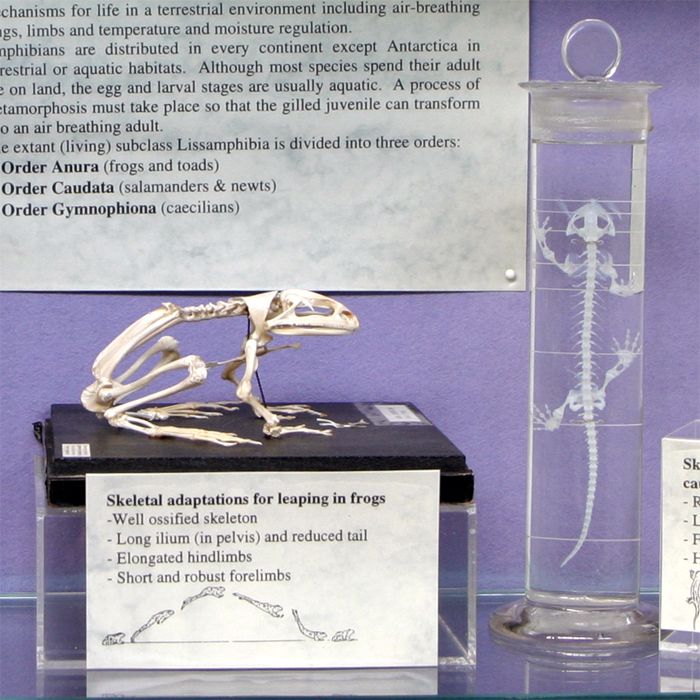
AMPHIBIAN SKELETONS
The skeletons of salamanders and newts are adapted for a primitive form of walking. The skeleton is relatively unossified with a long vertebral column. The forelimbs and hind limbs are the same size and the humerus and femur are held horizontally to the body. The animals advance their diagonally opposite feet each time the body bends.
A frog’s skeleton is specially adapted for leaping and swimming. The skeleton is strongly ossified with a long ilium in the pelvis, a reduced tail, elongated hind limbs, short and robust forelimbs. The animals leap and swim by thrusting hind legs backwards together. The skull shows the pedicellate teeth, a feature of all amphibians.

Left: Skeleton of Rana catesbiana, the American bullfrog.
Right: Skeleton of Salamandra maculosa, the European salamander.






